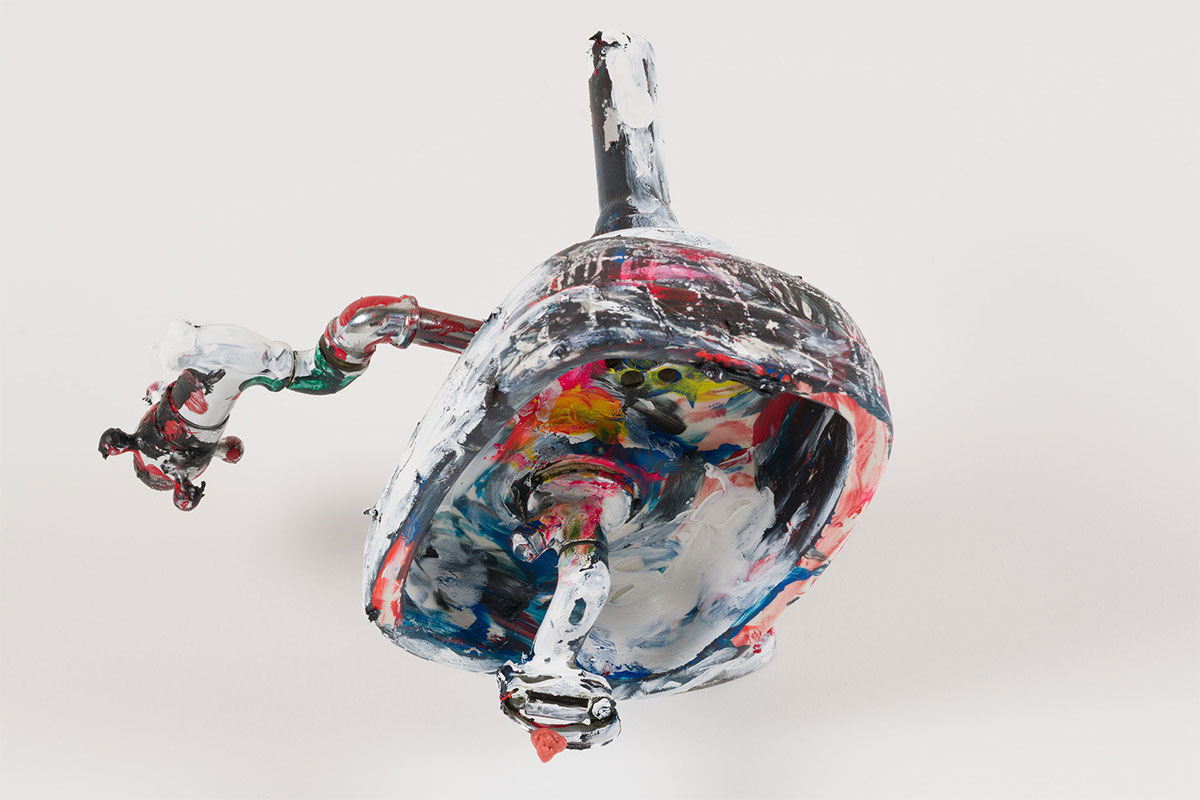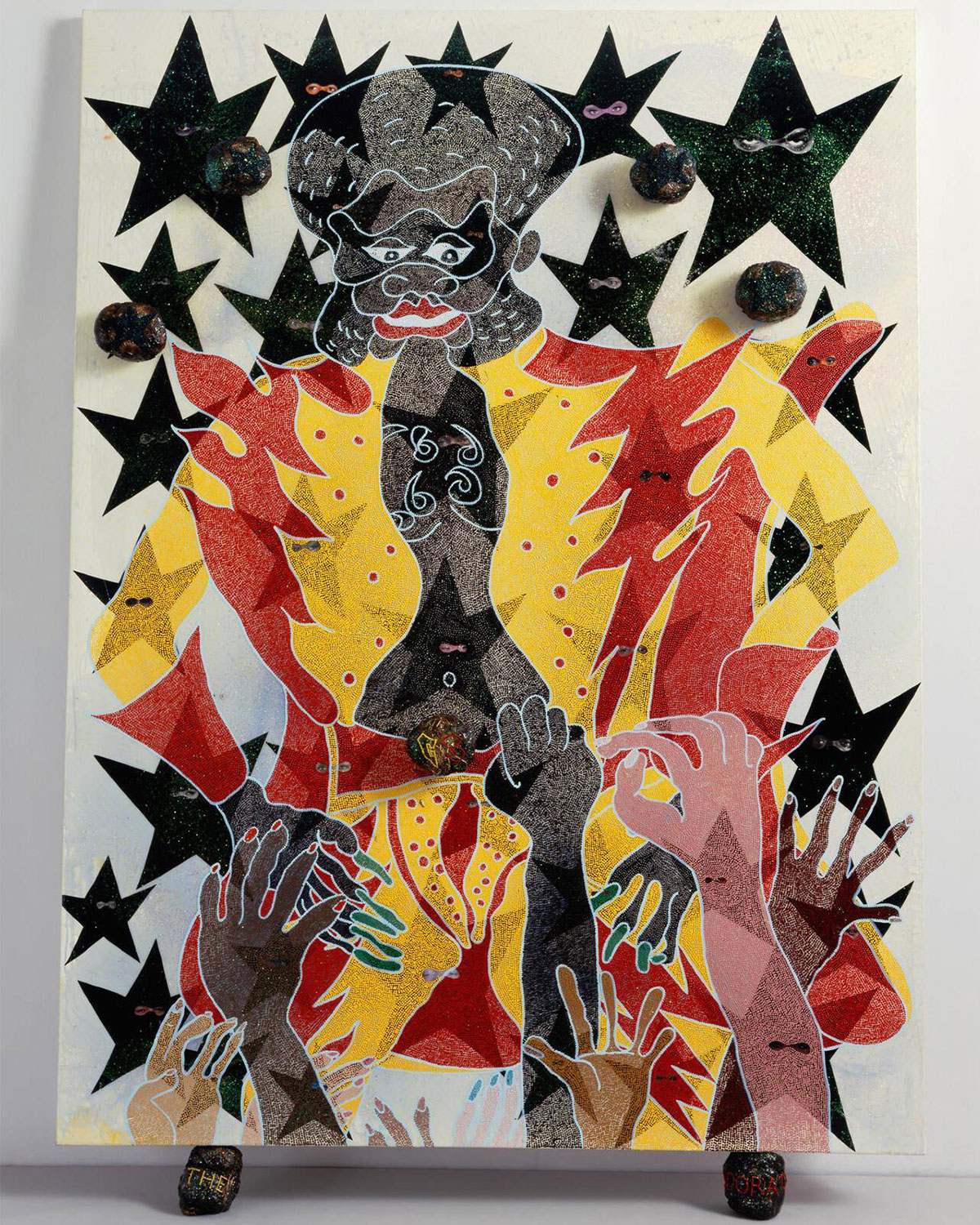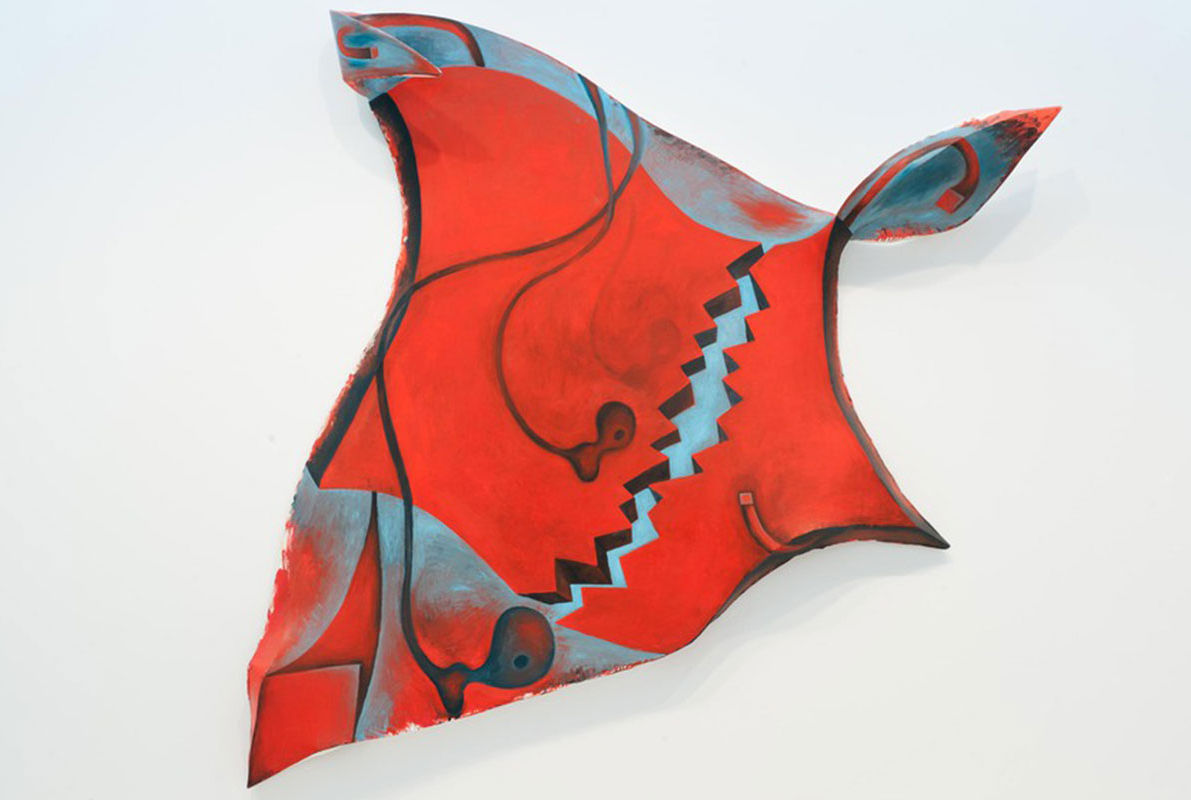This Tour Tuesday, we contemplate some of the works on view in our contemporary galleries. Part of a thematic chapter called Free Radicals, these artworks speak to the role of the artist as a responsive, even agitating force in contemporary life.

Pope.L has been challenging notions of race, class, and social stereotyping with his work across a variety of mediums since the late 1970s. Here, a drinking fountain turned upside-down—a reference to Marcel Duchamp’s 1917 sculpture Fountain—is meant to signal a historical condition, namely the American legacy of Jim Crow laws, making it not simply a plumbing mechanism but rather a public device of discrimination.
Additionally, this work references the artist’s advocacy for the residents of Flint, Michigan, who since 2014 have been exposed to high levels of lead in their municipal drinking water as a result of insufficient treatment of water from the Flint River.

In this psychedelic work, anonymous hands reach toward the title character, Captain Shit, a recurring figure—part superhero and part soul singer—in Chris Ofili’s paintings. Combining vibrant, shimmering paint and dried elephant dung from the London Zoo, Ofili’s sometimes controversial paintings explore contemporary black urban experience and its associated stereotypes.
The Captain Shit series considers notions of masculine identity through references to Greek mythology, the Bible, blaxploitation movies, pop music, and celebrity culture. Ofili seems to question these notions by literally turning the gaze back on us embedding eyes into the black stars that surround the central figure.

An outlier in the art-historical canon, Mangelos abandoned traditional mediums and forms of expression in favor of a playful, at times ironic, ethos of “anti-art.” Using the written word as his primary material, he aimed to shift our attention from art’s physical substance to its philosophical meaning. The conceptual quality of his work challenges our assumptions about the forms art can take.
This child’s chalkboard displays a single invented word: “noart.” The artwork has particular significance for Mangelos as it was the only object presented in the artist’s self-conceived retrospective, a type of exhibition that typically represents the full breadth of an artist’s career.

Elizabeth Murray is part of a generation who in the 1970s reasserted painting as an essential medium. Her gutsy, eccentrically shaped canvases challenged the male-dominated field of painting. Additionally, her vibrant color and unpredictable abstractions announced a defiant end to the visual severity of 1960s Minimalism.
A pioneer in painting, Murray disrupted the art-historical tradition of two-dimensional abstraction with humor, motion, and color. Blurring the line with sculpture, her paintings pushed the medium into new material directions. She hoped each new painting would convey a distinct personality and move the viewer from seeing to feeling.
